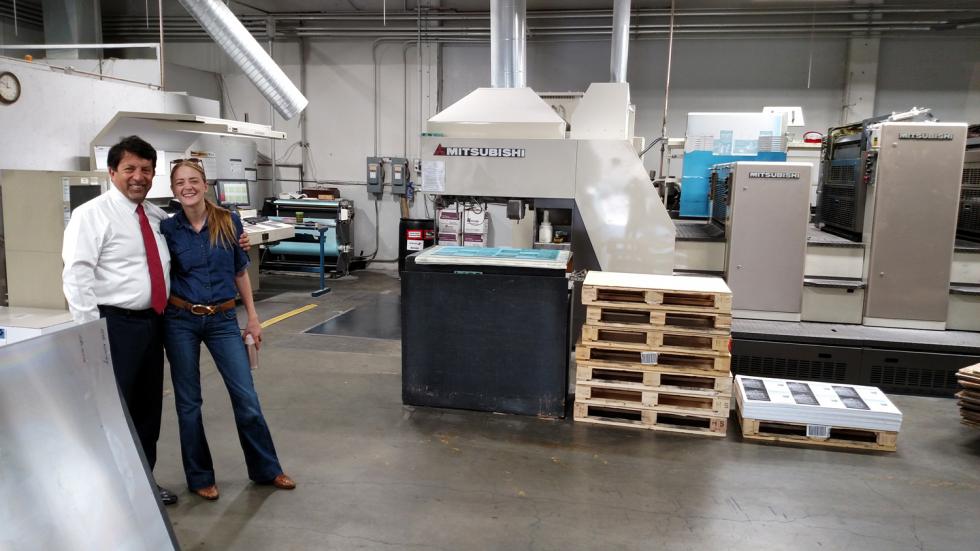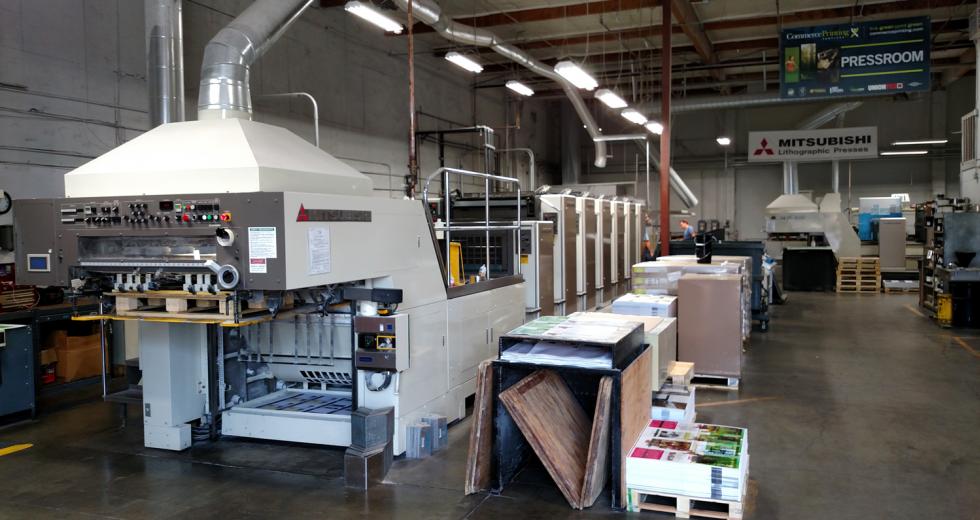Commerce Printing, located on 12th and C streets in Sacramento, has been printing Comstock’s magazine for roughly 16 years. As a business publication, we take pride in being the city’s only major magazine to be printed locally. But there’s another reason we’re proud of our long-standing relationship with the company: its commitment to environmentally sustainable practices.
A “substantially-sized system” of 645 kilowatts is currently being installed on the roof of Commerce Printing Services in downtown Sacramento, says Rita Edwards, a representative of Sunworks, which put in place the solar panel system for Commerce. “What really makes it unique in every perspective is that we really don’t have the real estate to place [this type of] system,” Edwards says. “They’re using the rooftops as added land.”
Edwards says that most companies use their roof space as storage for heating and air units, or other electrical uses. The difference with Commerce Printing is that nearly 70 percent of its roof was available, which is “absolutely unique,” she says. “They have very few items on the roof so it allowed the whole space to be used.” In fact, 75,000 square feet of roof space will be used, says Gil Caravantes, owner of Commerce Printing.
Commerce Owner Gil Caravantes with Comstock’s Editor in Chief
Allison inside the Sacramento printing company.

“I found it a great fact that Commerce already does a lot of recycling [of energy],” Edwards says. “Everything they do is so sustainable, I think it was a natural thing for them to go solar.” Commerce Printing has paired with Performance Chevrolet and InterState Oil Company to implement new biodiesel vans that use a non-toxic, low–emissions fuel in their delivery fleet. They also only use non-toxic, biodegradable vegetable-based inks in their printing and collect all of their paper trimmings to be recycled.
Caravantes says his company has been working with SMUD for many years to make use of renewable energy, and previously used wind power from local wind farms for the last five years, which he says could be unreliable at times. Now, about 85 percent of the company’s energy will come from the rooftop solar installation, with the remaining 15 percent still coming from SMUD. Any extra energy stored but unused will go back to SMUD, Caravantes says. While he doesn’t expect to save money by going solar, he feels it’s the right decision to decrease his company’s carbon footprint.
Caravantes says his company will have a screen in the main lobby of the building, at 322 N. 12 Street, that displays what the building’s energy use looks like, and how many kilowatts are being stored by the panels. He says he also expects the panels to contribute to the “longevity” of the roof — another cost-saver for the small, local shop. Commerce’s system is expected to go live just before the new year. “I think it’s the way to go these days,” he says.



